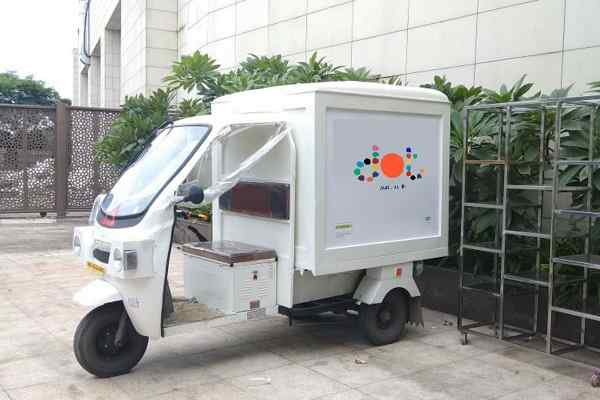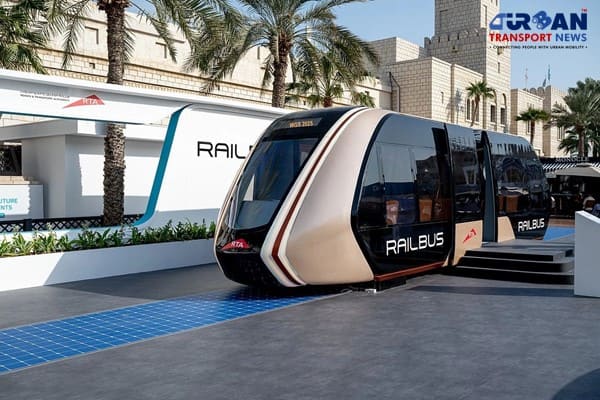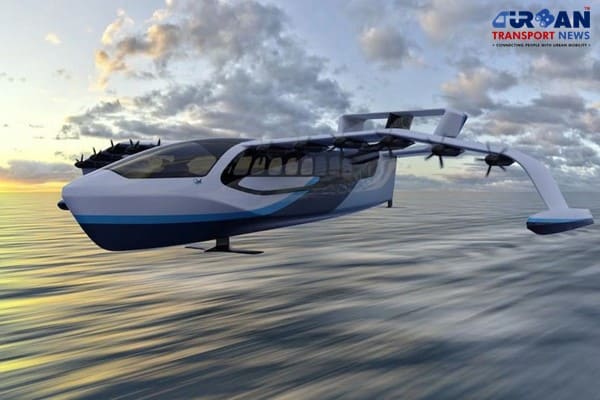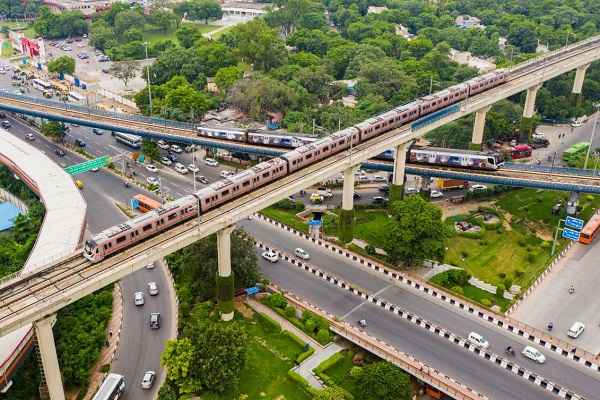 Delhi unveils ambitious Urban Mobility Vision: Luxury Metro Coaches, New Tunnels and Pod Taxi
Delhi unveils ambitious Urban Mobility Vision: Luxury Metro Coaches, New Tunnels and Pod Taxi Qatar approves Saudi Rail Link Agreement, Accelerating Gulf Railway Vision 2030
Qatar approves Saudi Rail Link Agreement, Accelerating Gulf Railway Vision 2030 UP Govt plans to introduce Water Metro services in Ayodhya, Varanasi & Prayagraj
UP Govt plans to introduce Water Metro services in Ayodhya, Varanasi & Prayagraj India’s First Urban Ropeway begins Trial Run in Varanasi, Set to carry 1 Lakh passengers daily
India’s First Urban Ropeway begins Trial Run in Varanasi, Set to carry 1 Lakh passengers daily India and Bhutan to Build First-Ever Rail Link: ₹4,033 Cr Project to Boost Regional Connectivity
India and Bhutan to Build First-Ever Rail Link: ₹4,033 Cr Project to Boost Regional Connectivity Patna to launch Eco-Friendly Water Metro; Trial Run soon between Digha and Kangan Ghats
Patna to launch Eco-Friendly Water Metro; Trial Run soon between Digha and Kangan Ghats Air India Group set to launch Flights Operations from Navi Mumbai International Airport
Air India Group set to launch Flights Operations from Navi Mumbai International Airport Chennai to launch 25-Year Mobility Plan with Unified QR Ticketing and One-App Transit System
Chennai to launch 25-Year Mobility Plan with Unified QR Ticketing and One-App Transit System Kochi Metro bags ₹4.4 crore contract to prepare DPR for Mumbai Water Metro Proejct
Kochi Metro bags ₹4.4 crore contract to prepare DPR for Mumbai Water Metro Proejct Navi Mumbai International Airport set for September launch; IndiGo and Akasa Air to lead Operations
Navi Mumbai International Airport set for September launch; IndiGo and Akasa Air to lead Operations
From dock to door: Making the last mile the best mile in India

There is no doubt that the pandemic has hugely accelerated Indian consumers' desire for e-commerce options. According to a report from Bain & Company, India’s e-commerce market grew by 25 per cent as a result of the pandemic, despite a two-month national lockdown and multiple prolonged disruptions over the fiscal year ending March 2021.
This trend is here to stay and the rapid growth of e-commerce sales in India poses challenges for retailers in providing efficient and cost-effective transport of goods to the customer's doorstep.
Last-mile delivery – the final stop in the delivery chain before parcels arrive at customers' doorsteps – is one of the toughest challenges for logistics. Businesses of all sizes are exploring the newest technologies and experimenting with supply chain models to increase parcel volume, expedite deliveries that will ultimately meet customers’ expectations.
Parcels under pressure
Before COVID-19 disrupted international logistics strategies, last-mile delivery was considered a perk rather than a necessity. Now, doorstep delivery is the only way for brands to compete and satisfy demand. Consumers not only want to order things to their door, they want next-day delivery, specific delivery times, and being able to track the driver's location.
In India, the term ‘Quick Commerce’ is now a buzz word. This refers to the delivery of goods and services is done within 10-30 minutes of ordering. According to consulting firm, RedSeer, India's quick commerce market is expected to grow up to 15 times in the next three years to become a USD $5 billion market by 2025.This shows that customers will not return to a company that doesn't deliver on time, misses the delivery, or doesn't offer on-demand, weekend or next-day delivery options.
Consumers also expect highly accurate estimated times of arrivals (ETAs) and real-time tracking of their parcels. They do not want surprises; they want to feel control over the e-commerce experience.
To top off the list of consumer demands, consumers are also now expecting eco-friendly delivery. About 70% of Indian shoppers surveyed by PwC described themselves as increasingly eco-friendly. They now consciously consider factors related to sustainability when making purchasing decisions.
As a result, companies now have a bigger responsibility to meet customer expectations – from the retailer to the final delivery person. To do so, technology is the answer for any service provider wanting to survive – and thrive – in the new world of ecommerce.
Putting a smile in the last mile
The last mile is the most time-consuming, complex, and costly part of the shipping process. In fact, it can cost as much as 53% of the total delivery fee of a typical parcel.
Not only are there huge logistical challenges for a company in sending thousands of different packages to different addresses using dozens of vehicles and drivers each day, but even the most well-planned route can be disrupted by unexpected traffic jams, accidents, road closures and local events. This is where location technology can provide end-to-end visibility from the first mile to the last.
Companies who are already adopting location technology have their parcels accurately tracked at each handover stage. This presents a huge opportunity for cost optimisation and efficiency in last-mile delivery.
For example, the Indian government has recently announced that the National Logistics Portal will be integrated with the Unified Logistics Interface Platform (ULIP), in an attempt to reduce the country’s logistics cost by making systems more efficient and broad based. This move involves integrating a total of 24 digital systems belonging to six Ministries through ULIP.
Drones and autonomous vehicles are also being tested to support the last-mile delivery because they cover longer distances in shorter delivery timeframes and have the potential to reduce the mismatch between demand and supply.
India’s new drone rules last year have eased drone operations across the country, resulting in tech companies setting off to have drones as a new delivery alternative. For instance, Zypp Electric, India's leading tech-enabled electric-vehicle-as-a-service platform has teamed up with TSAW Drones, an Indian start-up that provides drone solutions for logistics, to deploy 200 drones for last-mile delivery in selected Indian cities.
No one-size-fits-all logistics solution
The ongoing supply chain disruptions are forcing companies to channel their investments into automated solutions in warehouses or distribution centres to increase competitiveness and reduce operating costs; Internet of Things (IoT) to provide end-to-end supply chain visibility, creating more efficient and agile supply chains; and sustainability-driven operations to ensure efficiency and lower fuel consumption.
However, it is impossible to create a unified last-mile solution for all as every end consumer is different. Instead, it is important for solutions to integrate and interoperate across platforms, so vendors and suppliers can and leverage the ‘platform of platforms’, while allowing the creativity to generate new solutions.
Last-mile delivery continues to be important, and with location-based tools, companies can expand their visibility and control for a diverse range of logistic operations – from dock to door; from restaurant and grocery delivery to post to retail.
It’s time for companies to digitise and harness the power of location technology. If the logistics industry has learned anything from the past two years, it's to be ready for anything. While that in itself may be impossible, incorporating a location-based supply chain strategy is not.







